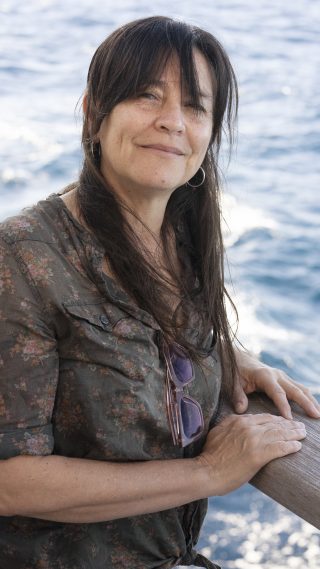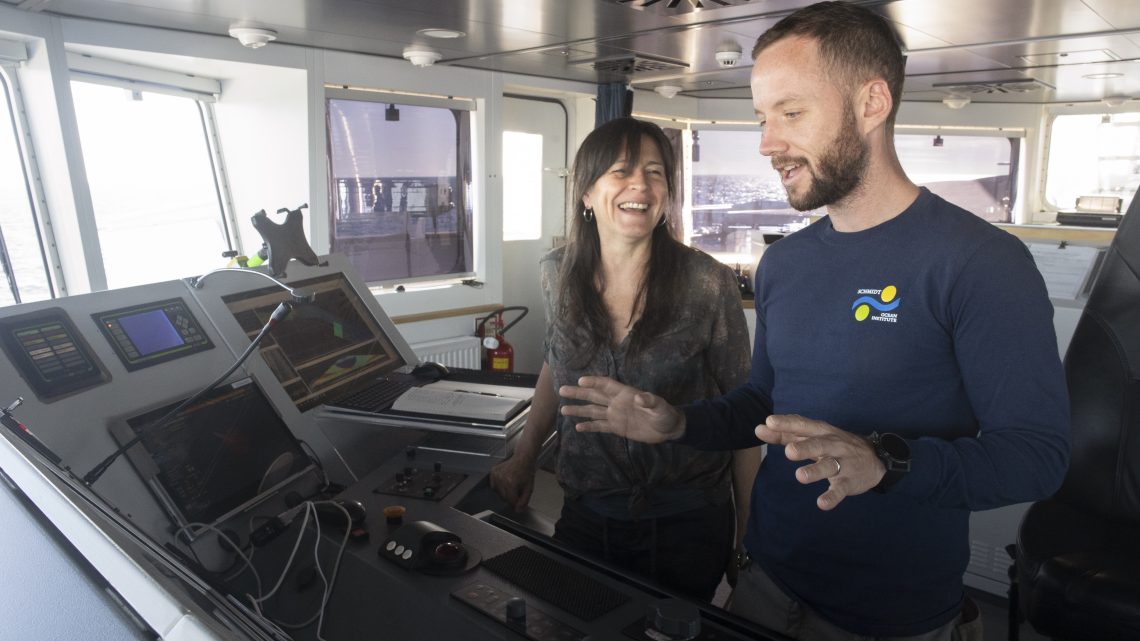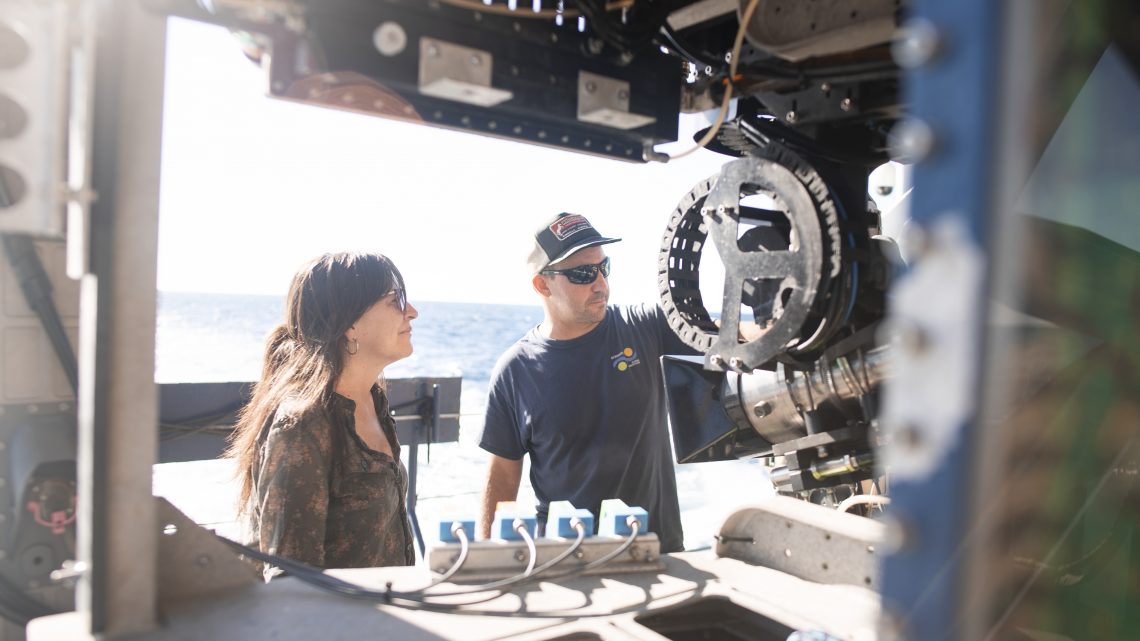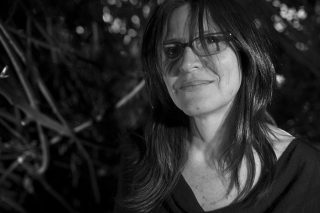(English translation follows below)
Es otoño, Venus una estrella del atardecer, y desde la cubierta del R/V Falkor podemos ver el relieve montañoso de la Bahía de La Paz. El desierto vestido de verde después de una larga temporada de lluvias. Mariposas, gaviotas y fragatas aún nos visitan desde la costa.
Durante un breve tiempo, todos a bordo estaremos viviendo y compartiendo este reducido espacio. Debemos ser conscientes de nuestro comportamiento, de cómo puede afectar a los demás y a la expedición, de nuestros recursos y de los residuos que producimos. Estamos en las mismas aguas que unen las costas del planeta. Hay mucho que aprender sobre la vida en un barco de investigación. Aquí, estamos en una misión, tenemos un objetivo que perseguir y nadie es un espectador. Aquí estamos navegando en una embarcación en el océano que pertenece a la nave donde flotamos en el espacio.
¿Cuándo creemos que el espacio es lo suficientemente grande como para no preocuparnos por nuestras acciones y nuestro entorno?
En esta expedición, el horizonte no está allá a lo lejos, ni a la altura de nuestra vista. Está aquí mismo; cerca de nosotros. Estamos flotando sobre él.
El mar es el límite entre la pregunta y una pista para encontrar la respuesta.

Desde la cubierta, podemos ver las olas. ¿O podría decir que estamos viendo cómo toma su forma el movimiento entre el mar y el cielo? Las cualidades de ambos lados crean la forma de lo que vemos. Atribuimos las olas al mar, ya que el aire parece invisible. Pero también es borroso a nuestra vista todo lo que se esconde bajo la superficie del mar.
¿Qué más hay ahí que no podamos observar? Me han dicho que ahí adentro, en el fondo, es donde podemos encontrar una respuesta, pero aún no he hecho la pregunta.
Han sido pocos días de introducción al proyecto de investigación. En solo un par de días antes de comenzar la expedición hemos hablado de miles y hasta de millones de años de los movimientos de la corteza terrestre. Es posible que no podamos percibir estos movimientos en nuestras vidas. Aún así, esperamos que las muestras de rocas, la batimetría, el magnetismo, la temperatura y el procesamiento de datos nos ayuden a comprender sus ritmos. En el R/V Falkor contamos con tecnología diversa, desde la más reciente en SuBastian hasta aquella del cuarto de máquinas que pertenece a casi medio siglo atrás. También aquí contamos con la mente de los científicos, los conocimientos y habilidades de los pilotos del ROV, la paciencia y disposición del capitán, la profesionalidad de todos y cada uno de los tripulantes, de los técnicos marinos, y de los cocineros que alimentan nuestras emociones. Todos a bordo hacen posible que todo funcione de forma fluida, suave, sin problemas y segura.
En los planes para la primera etapa de la expedición, se definió dónde comenzará la batimetría develando secretos del fondo marino, para que contemos historias nuevas del lugar que habitamos.
Será un viaje profundo, tal vez hasta 4.000 metros. La dirección y las circunstancias son quienes significan la distancia. Existe un plan para lograr los objetivos de la expedición. Habrá múltiples datos que procesar, mediciones y muchas muestras para estudiar, buscando las cualidades que nos revelen ritmos de la Tierra.
Aquí aprendí que la Tierra es el único planeta conocido con agua en la superficie, y sabemos muy poco sobre los océanos. Estoy emocionada de ser testigo de la primera sumersión de Subastian en esta expedición, entrar en el profundo mundo submarino donde el reflejo de lo desconocido nos ilumine por un instante.
The Horizon Is Not Far Away
In the fall days when Venus is an evening star, standing on the deck of R/V Falkor, we can see La Paz Bay’s mountainous relief. Dry land dressed in green after a heavy rainy season. Butterflies, seagulls, and frigates still visit us from the shore.
During a short time, all onboard will be living and sharing this space. We should be aware of our behavior, how it can affect others and the expedition, conscious of our resources and the waste we produce. We are on the same waters that touch every coast around the world. There is so much to learn about living on a research vessel. Here, we are on a mission, we have an objective to pursue, and no one is a spectator. Here we are navigating in a vessel on the ocean that belongs to the most giant vessel where we float in space.

When do we believe space is big enough not to care about our actions and our surroundings?
In this expedition, the horizon is not far away at the height of our sight. It is right here; close to us, we are floating on it. The sea is our borderline, between the question and a hint for the answer.

From the deck, we can see the waves. Or should I say we are looking at how the movement between the sky and the sea takes its form? The qualities of both sides create the shape of what we see. We attribute the waves to the sea, as the air seems invisible. But it is also blurred to our sight whatever lays under the sea surface.
What else is there that we cannot observe? I have been told that beneath us, deep below, is where we may found an answer, but I have not made my question yet.
In a few days as an introduction before the expedition starts, we have been talking about thousand and even millions of years of movements of the Earth’s crust. We may not be able to perceive these long-term movements. Still, rock samples, bathymetry, magnetism, temperature, and data processing, will help us understand. We rely on the R/V Falkor’s technology (new one and those of different decades), the minds of the scientists, the knowledge and abilities of the ROV pilots, the patience and disposition of the captain, the professionalism of every and each one of the crew members, marine technicians, the chefs nourishing our emotions. Everyone on board makes it possible that everything works smoothly, safe and sound.

Planning the first leg of the expedition, now we know where it will start the bathymetry revealing secrets of the seabed, so we can tell new stories of the place we inhabit.
We will be diving deep, perhaps down to 4,000 meters. A length in depth in which direction and circumstances signify it. There is a plan to achieve the goals of the expedition. There will be data to process, measurements, and many samples to study, searching for the qualities that the Earth’s rhythm reveals to us.
Here I learned Earth is the only planet we know with water on the surface. We know so little about the oceans that I am excited to be a witness of this expedition’s first SuBastian splash submerging in the underwater world to give us a glimpse of the unknown.

